Dining room paint ideas – 10 ways to decorate that'll impress your dinner guests
Try out these creative dining room paint ideas for a space with real wow factor
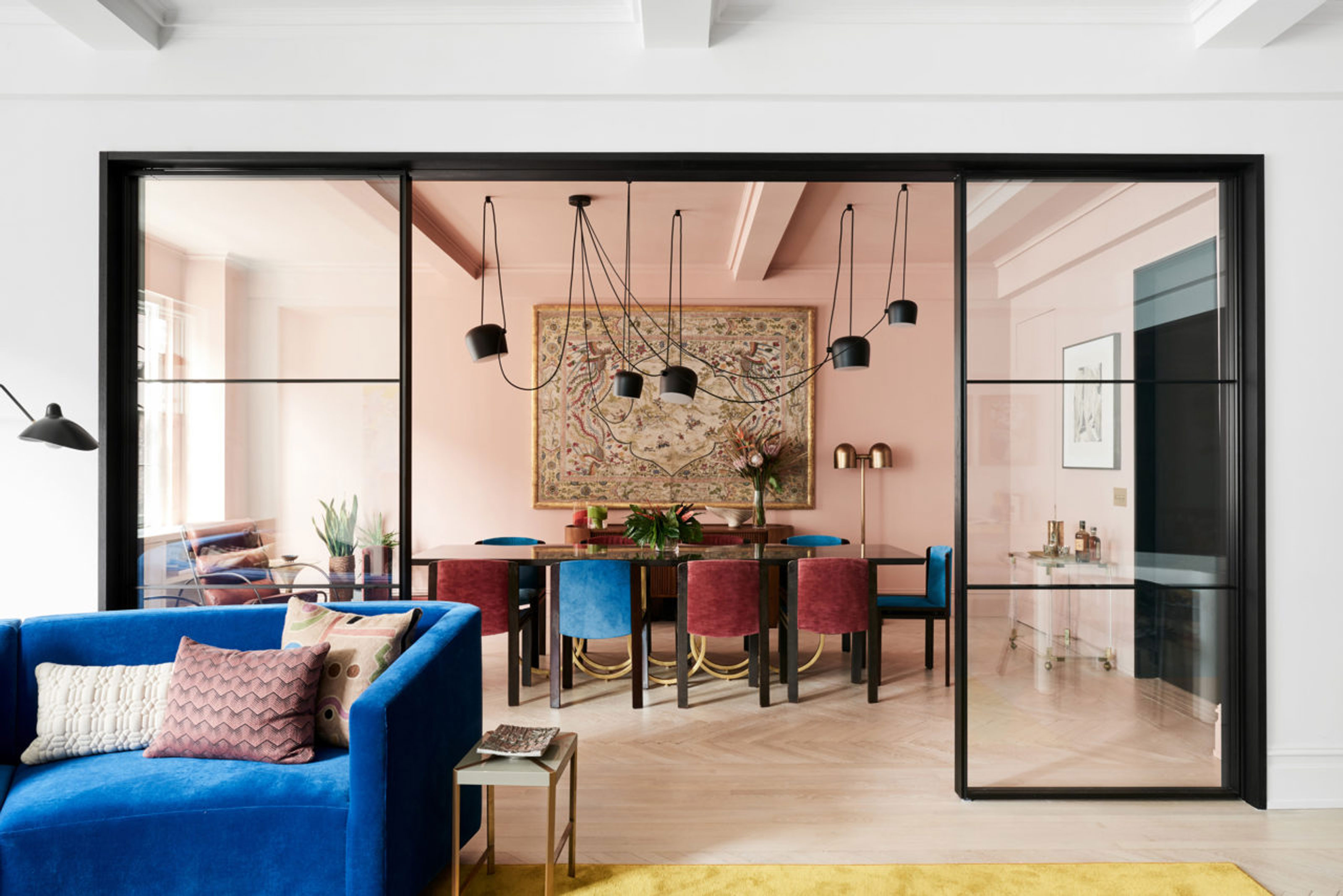

As an entertaining hub of your home, picking clever dining room paint ideas is a great way for your house to make a good impression on guests. Depending on your routine, it might be somewhere you use a lot, or only when you visitors for more formal meals, but regardless, it's somewhere that people will dwell for long periods in your home. Why not give them something interesting to look at?
Yes, the dining room is a great canvas for creative paint ideas. There's no huge demand for anything to be on the walls like in other rooms in the house, like the kitchen or living room, so you've got carte blanche to focus on decor. But, of course, paint isn't just limited to the walls.
To inspire a more creative use of paint in the dining room, we've found some ingenious examples of how color and pattern can be used in this room. If you want to take this room a notch higher in the aesthetics department, here's all the inspiration you'll need.
10 dining room paint ideas for creative decorating
'Dining rooms are the hub of a home where people gather to eat and socialize and so it is important to recognize the many senses and emotions already in play,' says John Ashton at Albany. 'Choose colors that evoke the atmosphere you want to create, whether calming and relaxed or fun and entertaining.'
1. Consider an eye-catching contrast
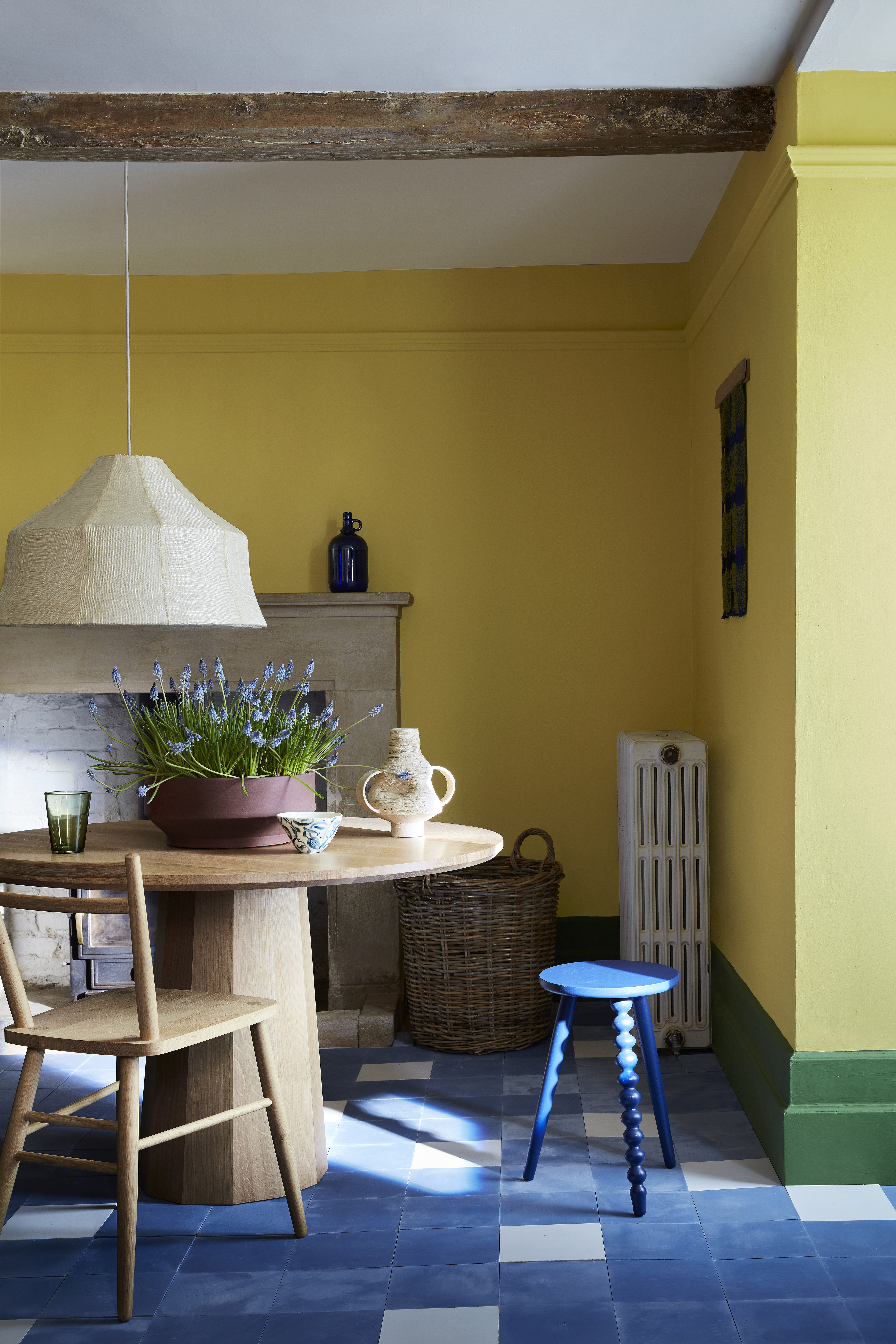
A big contrast can add a big personality. This fetching palette, while bright and primary, calls on vibrant natural colors for a creative scheme that suits this rustic space.
Adding the spring greens for a harmonious vibe, the two colors, adjacent on the color wheel, make for a striking interior. If you have a small dining room with little sunlight, mix in some light neutrals to reduce the visual heaviness that could be created with this color scheme.
2. Color drench a dining room for drama
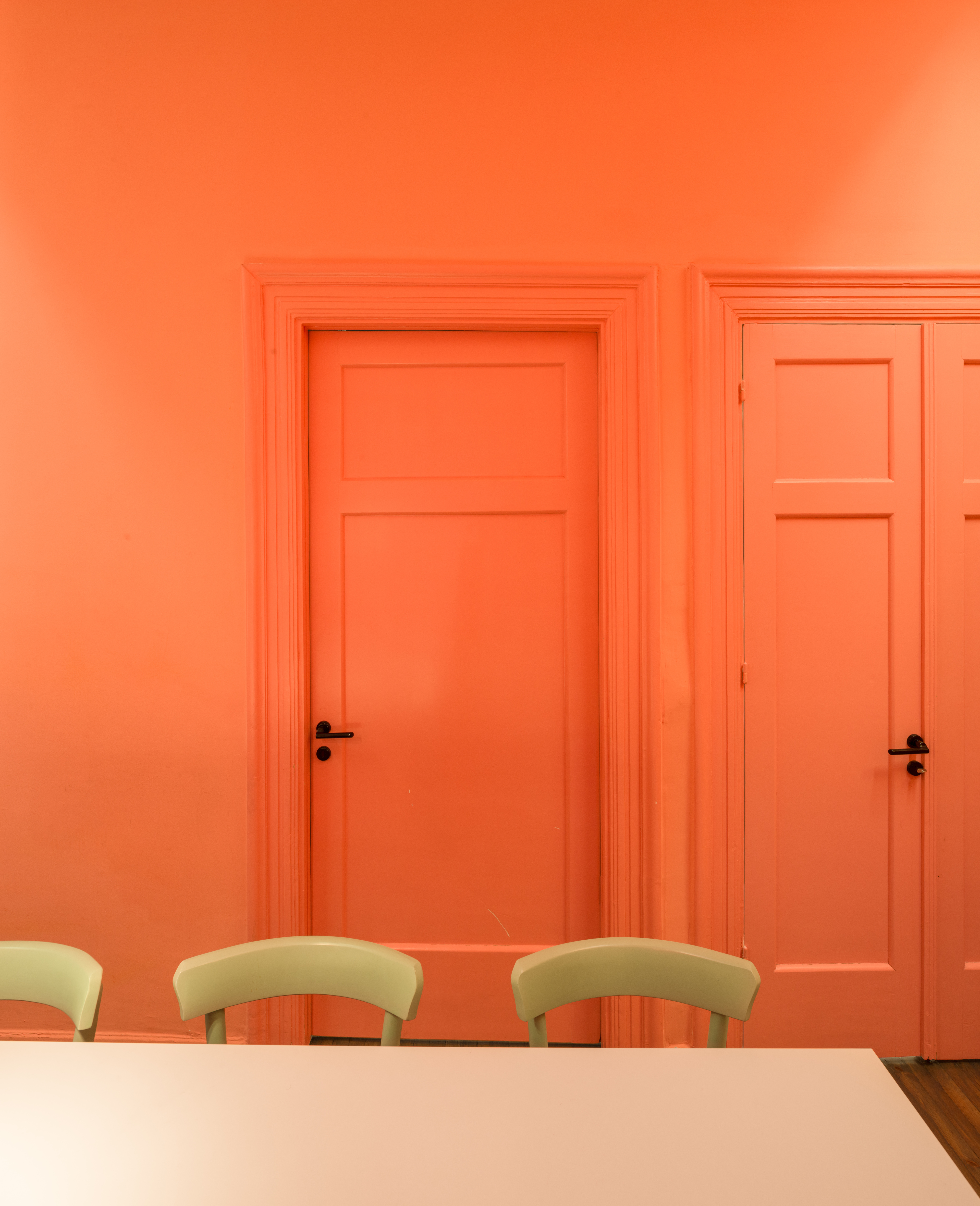
The color drenching trend is taking hold of every room, and that doesn't exclude the dining room. From painted walls, ceilings, trims and skirtings, the idea is to fill up the space with one color.
For the design of this Waterfront Nikis Apartment, architect Stamatios Giannikis chose three bold colours to organise the space. Flamingo pink was used in spaces that overlook the sea, azure blue is used in spaces that have views out across the neighbourhood and the pastel green shade is used in the apartment's wet spaces such as the kitchen, shower room and the WC.
'The use of bold color is done to complement and strengthen the power of the sea view, not to suppress it,' says Stamatios. 'Pastel green is used to create serenity in the functional spaces, and flamingo pink is used to frame the actual azure blue of the Mediterranean Sea.'
You could choose a soft, mid-tone or a bold, all-enveloping color, or even their tonal variations and paint across woodwork, the inside of doorways, and window frames. Interestingly, this dining room color idea will also help flatten less appealing features, like radiators, making them disappear into the background.
'Keep it in the family. Painting walls, trim, and details in different shades from the same color family, like grey or light blue, then layering in shades of white within the fabrics, decor, and or furnishings will make your whole space look larger,' says Lance Thomas, principal designer at Thomas Guy Interiors.
3. Open up the space with light walls and white ceiling
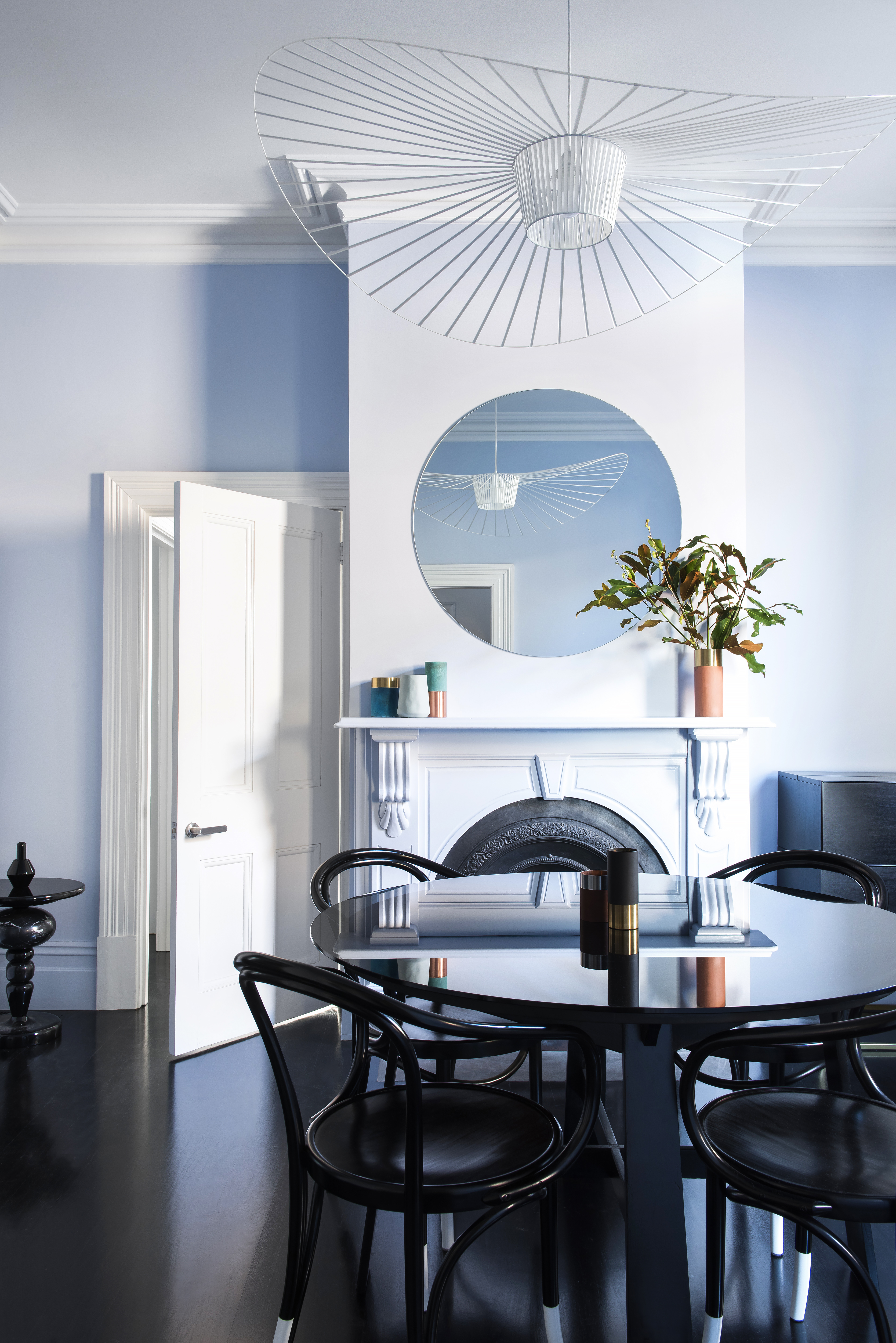
While designing a dining room, many of us prefer warm hues – especially browns, yellows, and blues. That's because they feel cozy and inviting, and create the perfect backdrop for gatherings, conversations, and eating.
By choosing a light blue dining room wall idea, and complementing it with white borders and ceiling, Danielle Brustman and The Stylesmiths have been able to create a wonderfully cocooned space. The wall colors offset the deep-toned dining furniture and the dark, reflective walls. That dainty lighting piece and mirror add charm too.
'So many city apartments, certainly in NYC, are open space combos of colors,' says Jennifer Morris, principal designer, JMorris Design. 'Keeping all rooms a bright white creates a modern loft-like feel and allows the other materials, furniture and fixtures to shine. We are especially fond of white combined with gorgeous, rich woods as in the console and pendant lights.'
4. Paint a mural
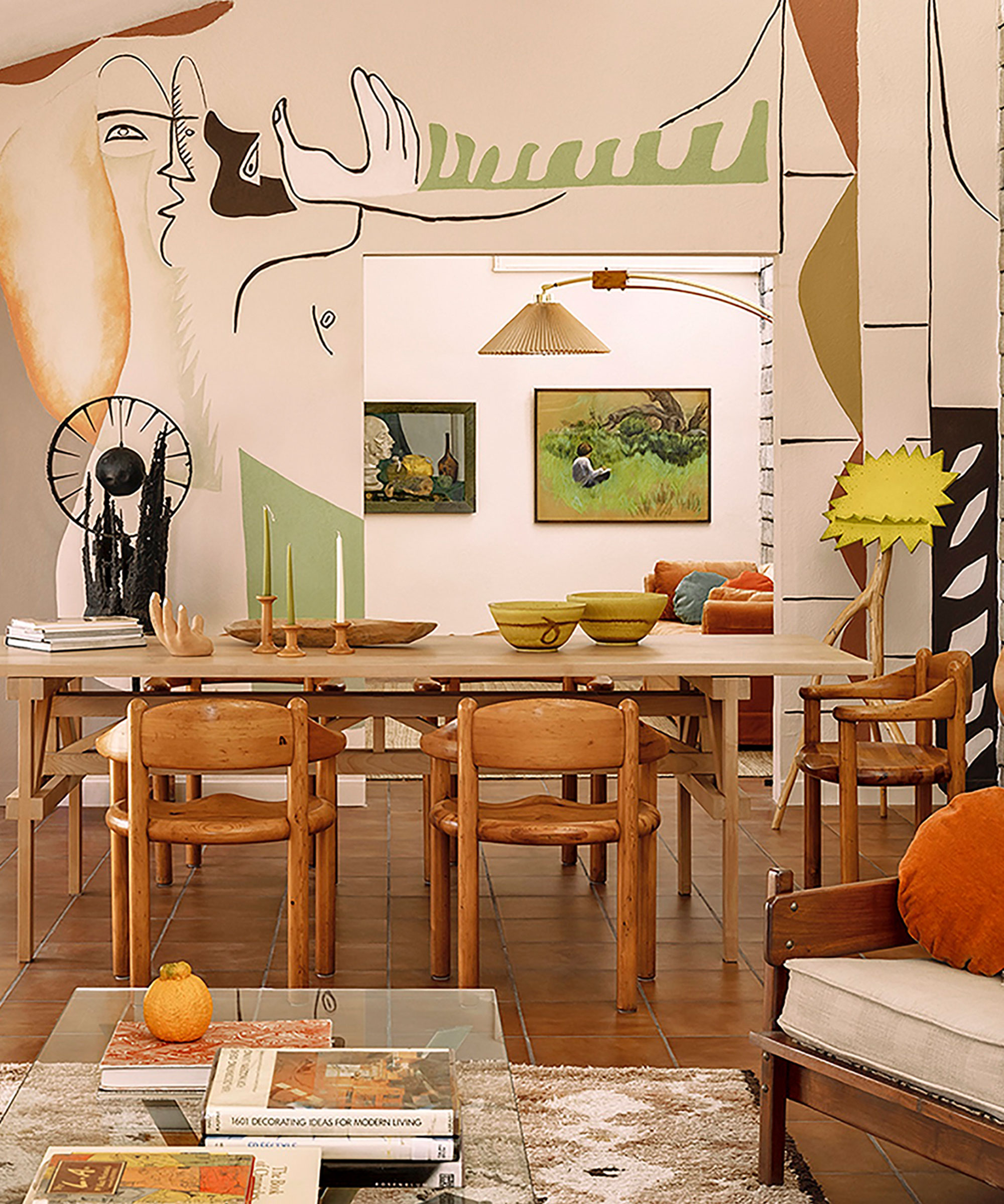
If you want to convert your dining into the home's focal point, and if you host often and want the most impressive room on display, choose to paint a wall mural across the room. These are a lot more textural than wallpapers and if you get one customized, you can give the room a personal touch.
While not everyone may be an expert at painting, you could find a design you like and use a stencil to copy it onto your walls. But if painting one isn't on your agenda, you could opt for decals that can be pasted and removed with ease.
5. Create an accent wall
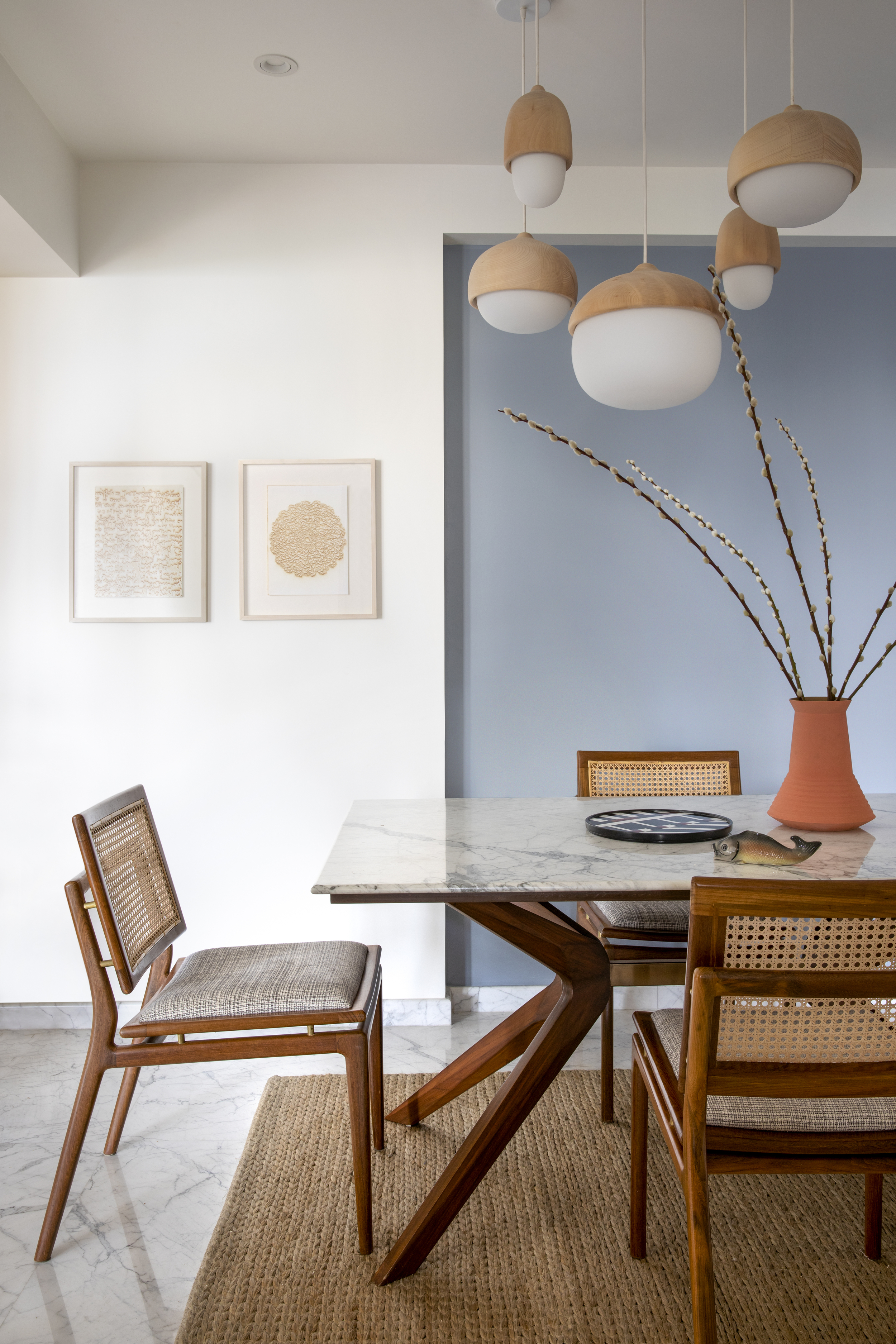
Do you have a favorite color you're dying to use but you fear it will overpower everything in the room? An accent wall is an answer!
Accent walls are a quick and easy to change the vibe of a space. Plus, it's a great and affordable decor change.
A well-placed accent wall also coaxes the eyes to a focal point in the space. Here, the blue gives depth to the room, painted within the recessed section of the wall. It also subtly demarcates the eating space from the rest of the room.
6. Go bright on the joinery
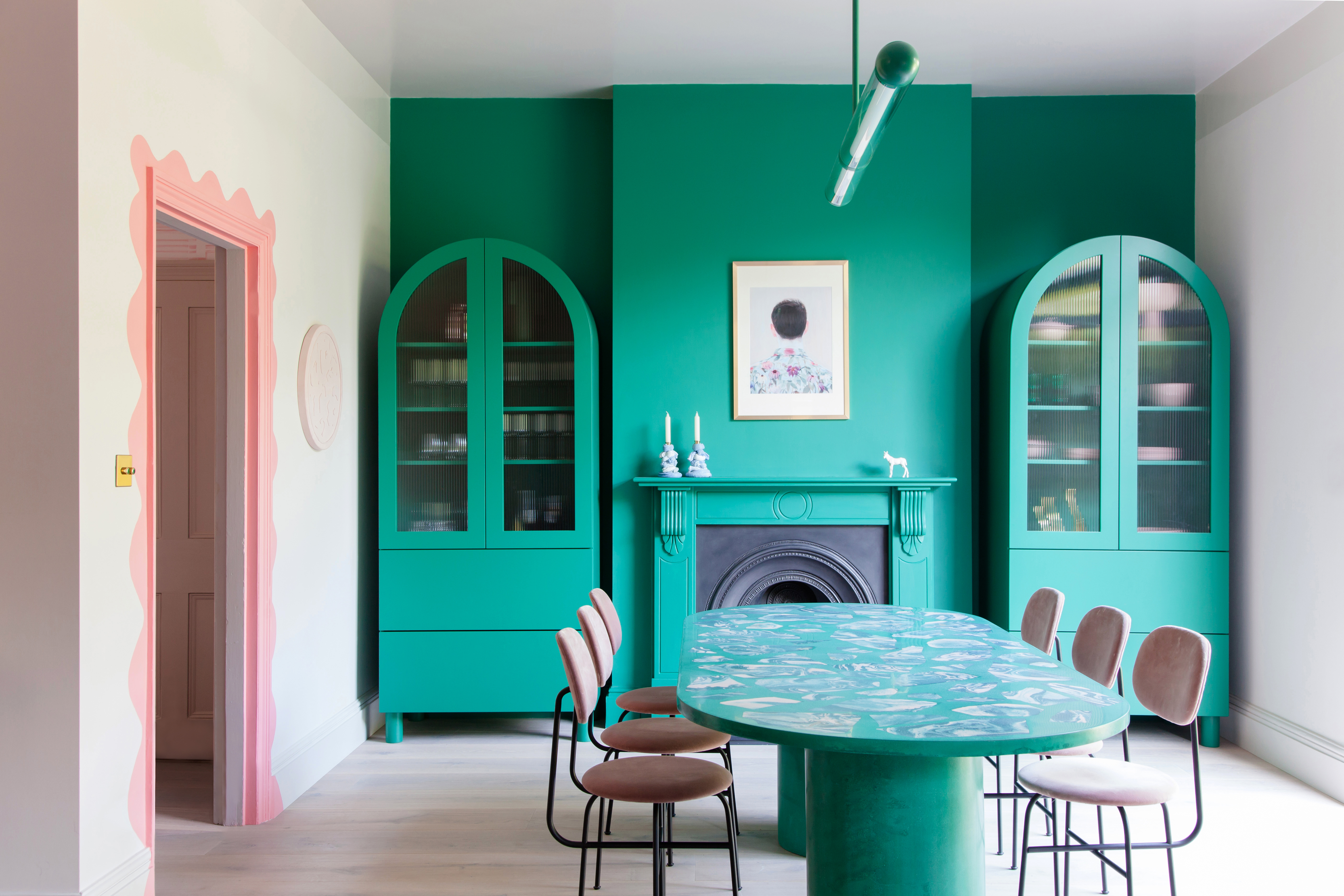
Wall paints don't have to simply stop at the walls and ceilings. Wash them over the joinery and create a seamlessly bright space that vies for attention. In this room, the green walls and painted cabinets almost read like a seamless feature wall. Another important lesson from this project designed by 2LG studiois the clever concept of repetition.
This is an important element in good design and a popular paint trend where a dominant color is mirrored across a room, creating a visual pathway around the room.
'As open plan dining rooms are increasingly popular, also consider the colors used in other spaces in view,' says Albany's John Ashton. 'For example, green is a great choice for dining rooms with a garden view and the natural hue will bring a fresh but calm feel to the space.'
7. Set up a dramatic entrance by painting the arch a dark tone
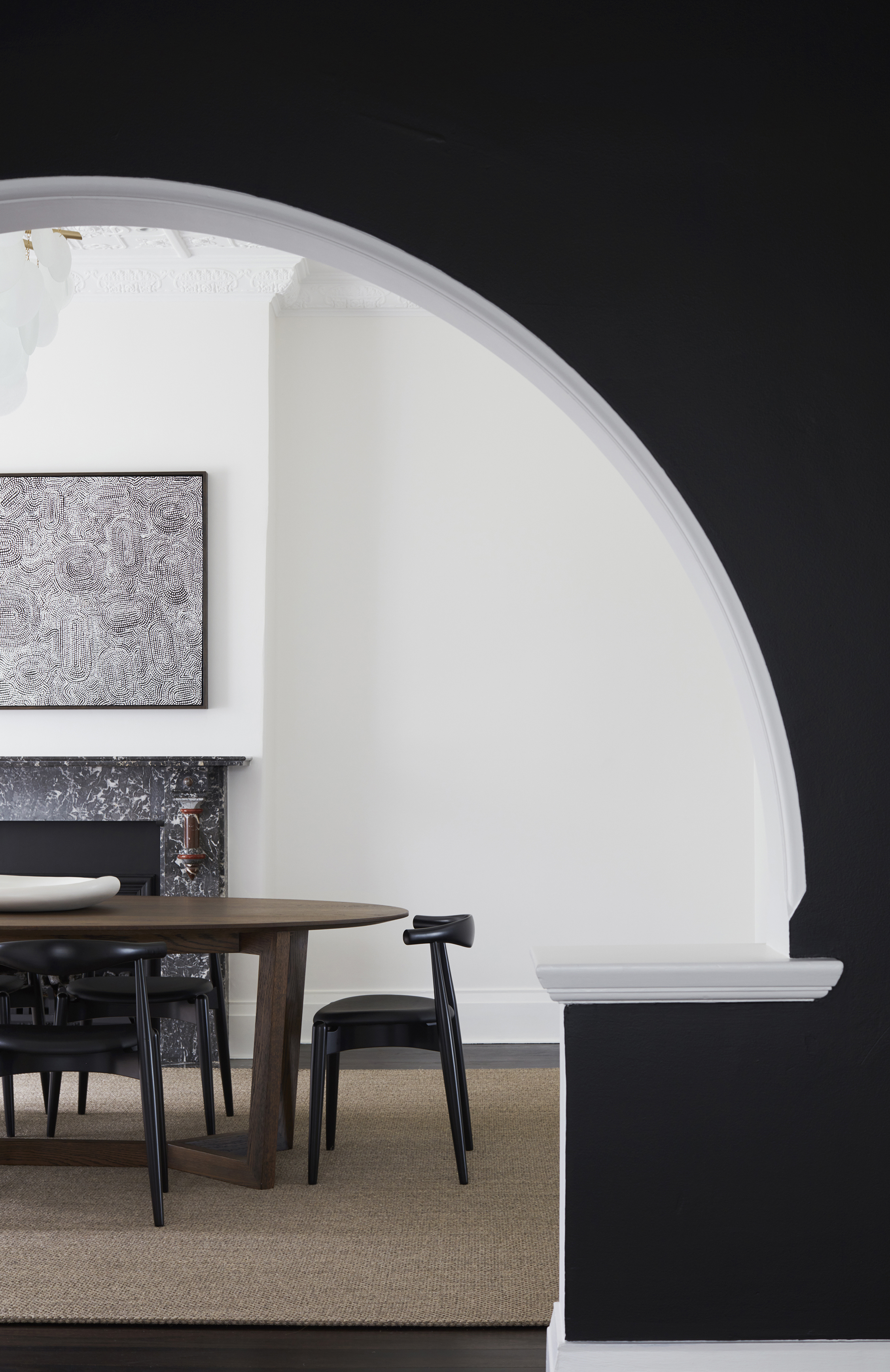
Who doesn't love gallant arches? It's probably the first thing you learn about in architecture 101. Not only are these engineering marvels, seen throughout history, but their forms also give a soft, whimsical effect to spaces. Arches have received so much love over decades that these have now become decorative add-ons in interior design.
Even a modest space can benefit from this historic flourish, and by painting it, you can create the most dramatic effect in the humblest of spaces. Painted indoor arches elevate the home's value, and inject grandness into it.
8. Experiment with painted furniture
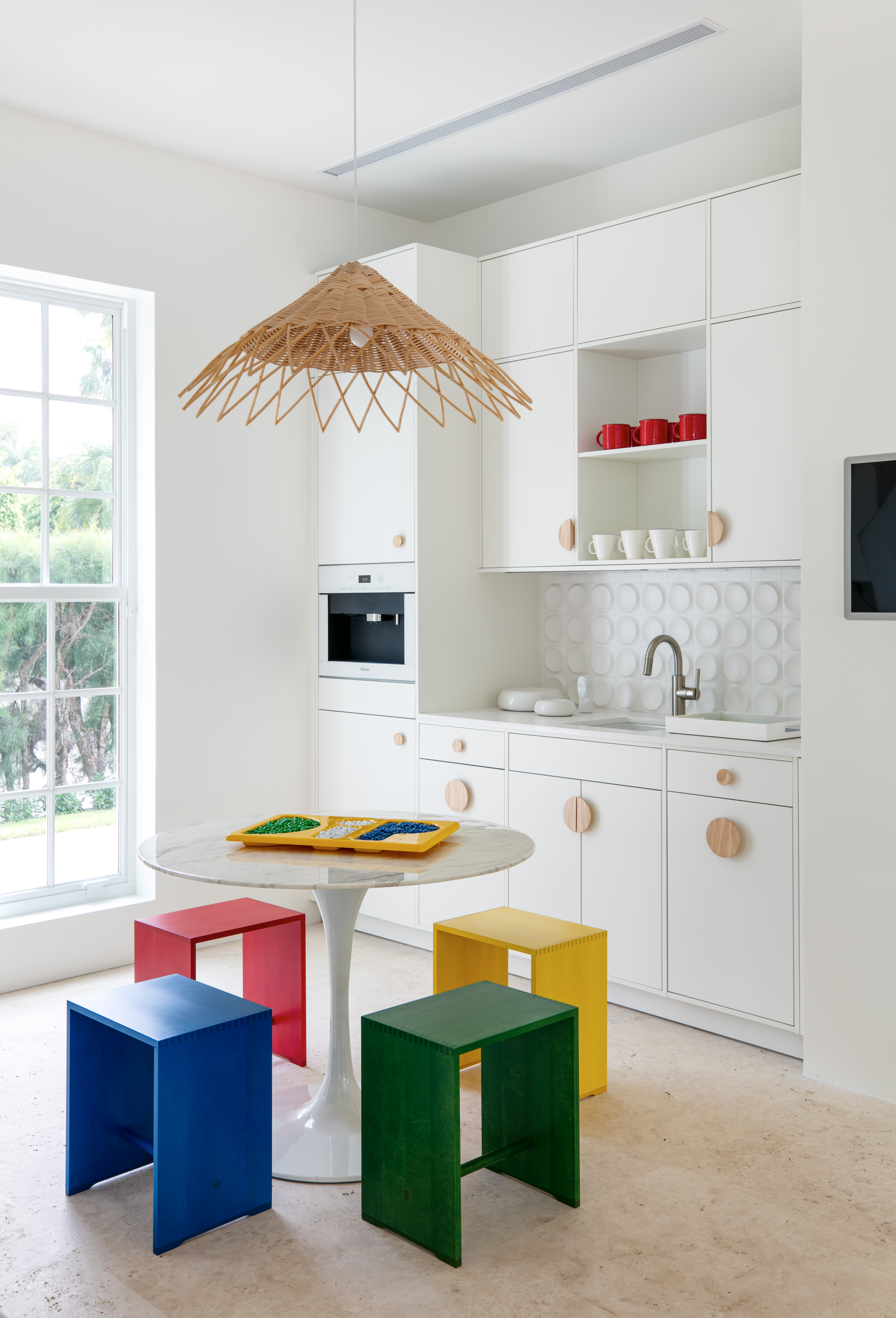
There's something so charming about mismatched tables and chairs; they almost have an outdoor flair to them.
A great way to add hues to the dining room is with colored furniture. You can use special outdoor spray paints to give your old stools, chairs, and tables a fresh look. Painting furniture can become a lovely weekend project.
If you're artistically abled, you can use your furniture as a blank canvas to paint a beautiful scene on it. Think of floral designs, typography to faces. Your dining set will surely become a great conversation piece.
9. Add depth with color blocking
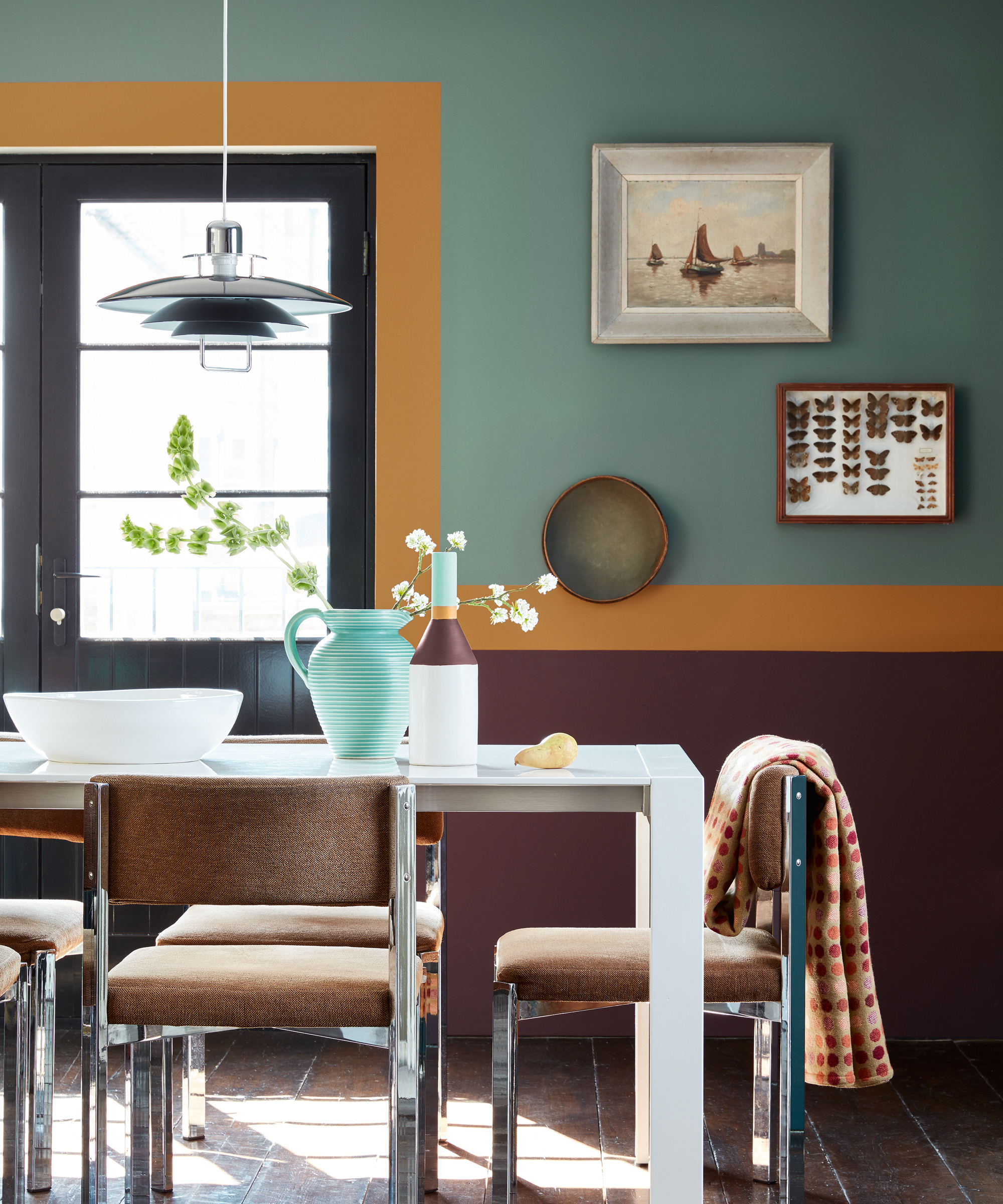
Try a tone-on-tone look for the biggest impact. One way of doing this is by dressing the space with analogous colors, that fall next to each other on the spectrum. This means layering.
If you do decide on choosing hues that fall opposite each other, remember to keep a balance between their intensity and quantity. Here, the teal establishes a largely soothing scheme while the yellow, used as a border, adds a pop of hue, and the brown balances the entire scheme.
One secret to ensuring the success of color blocking is making sure the rich pigments are cut by bands of crisp white. That will allow the eyes some rest, and give the space a less rambunctious feel. Plus, with effective dining room lighting ideas, you can ensure the space is bright and airy. 'Another approach is to go for bright and white on the walls and a featured color, or patterned wallcovering on the ceiling,' says Lance. 'This will make a statement worth noting.'
10. Drench the walls in limewash paint
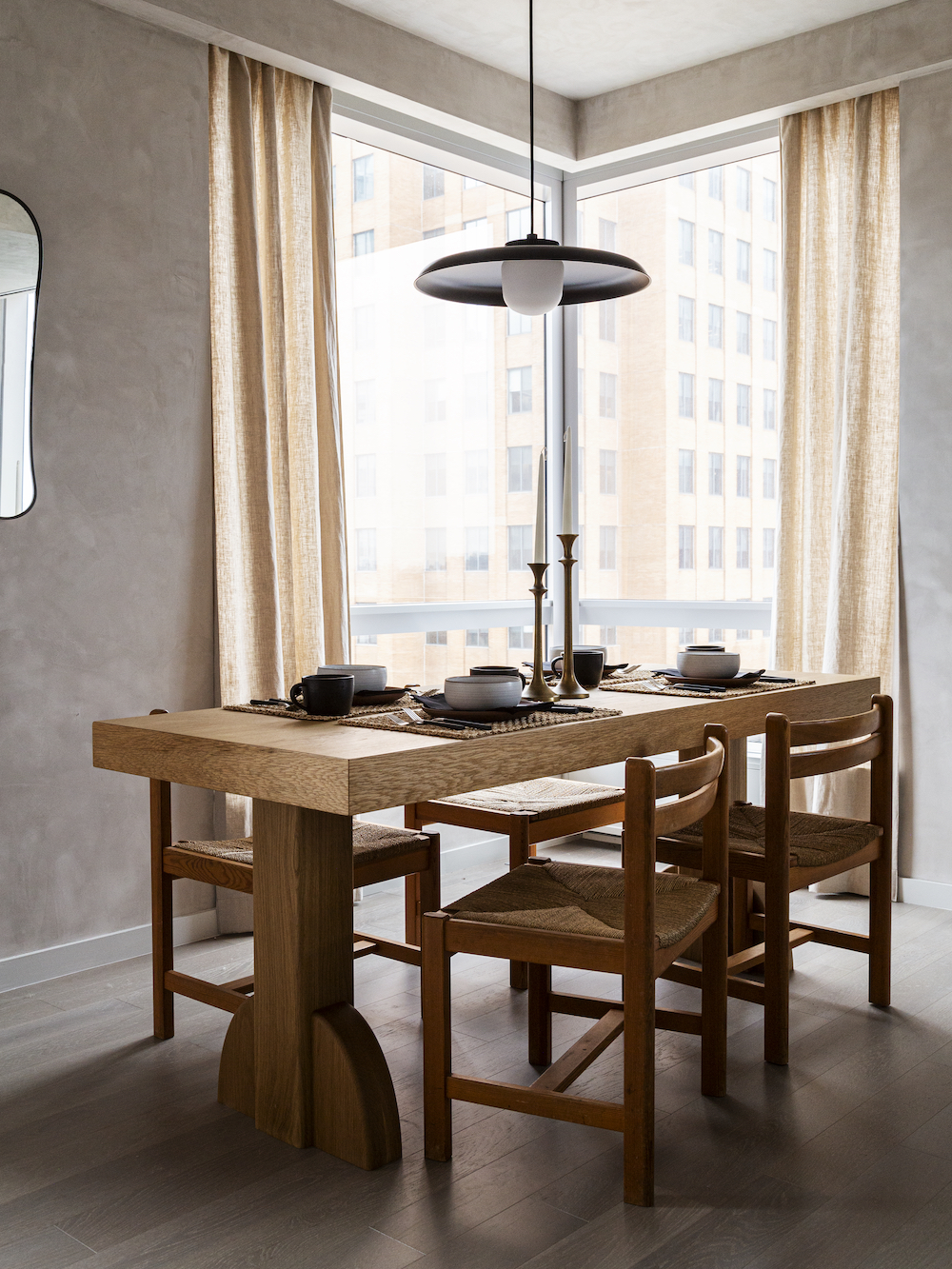
Those who love earthy interiors will love the idea of limewash paint. This is a finish full of textural qualities due to its sandstone aggregate. It looks like putty, although it is usually soft to the touch.
This paint finish has a rooted and romantic feel to it and can envelop a room in old-world charm. This is also a great paint alternative for those who prefer more hypoallergic solutions since the alkaline pH of limestone makes it extra mold and bacteria-resistant.
Should I paint my dining room dark?
If you want to make your dining room feel cozy, dark paint could work wonders. Deep charcoal greys, moody blues, and teals can set the mood for a perfect gathering spot for an evening with friends. Even black for that matter is a wonderful hue with a lot of depth.
One thing to consider though, in a dark dining room, you should ideally look to increase the space's lighting, so that it doesn't feel too closed in. While opening up windows and adding more fixtures could solve the issue, you could take the more decorative route of glossy paints that bounce the light around the room.
Apart from paints, you could also consider dining room wallpaper in dark shades. The colors could help exaggerate the depth of the room and make it seem larger and more intimate.
Be The First To Know
The Livingetc newsletters are your inside source for what’s shaping interiors now - and what’s next. Discover trend forecasts, smart style ideas, and curated shopping inspiration that brings design to life. Subscribe today and stay ahead of the curve.

Aditi Sharma Maheshwari started her career at The Address (The Times of India), a tabloid on interiors and art. She wrote profiles of Indian artists, designers, and architects, and covered inspiring houses and commercial properties. After four years, she moved to ELLE DECOR as a senior features writer, where she contributed to the magazine and website, and also worked alongside the events team on India Design ID — the brand’s 10-day, annual design show. She wrote across topics: from designer interviews, and house tours, to new product launches, shopping pages, and reviews. After three years, she was hired as the senior editor at Houzz. The website content focused on practical advice on decorating the home and making design feel more approachable. She created fresh series on budget buys, design hacks, and DIYs, all backed with expert advice. Equipped with sizable knowledge of the industry and with a good network, she moved to Architectural Digest (Conde Nast) as the digital editor. The publication's focus was on high-end design, and her content highlighted A-listers, starchitects, and high-concept products, all customized for an audience that loves and invests in luxury. After a two-year stint, she moved to the UK and was hired at Livingetc as a design editor. She now freelances for a variety of interiors publications.
-
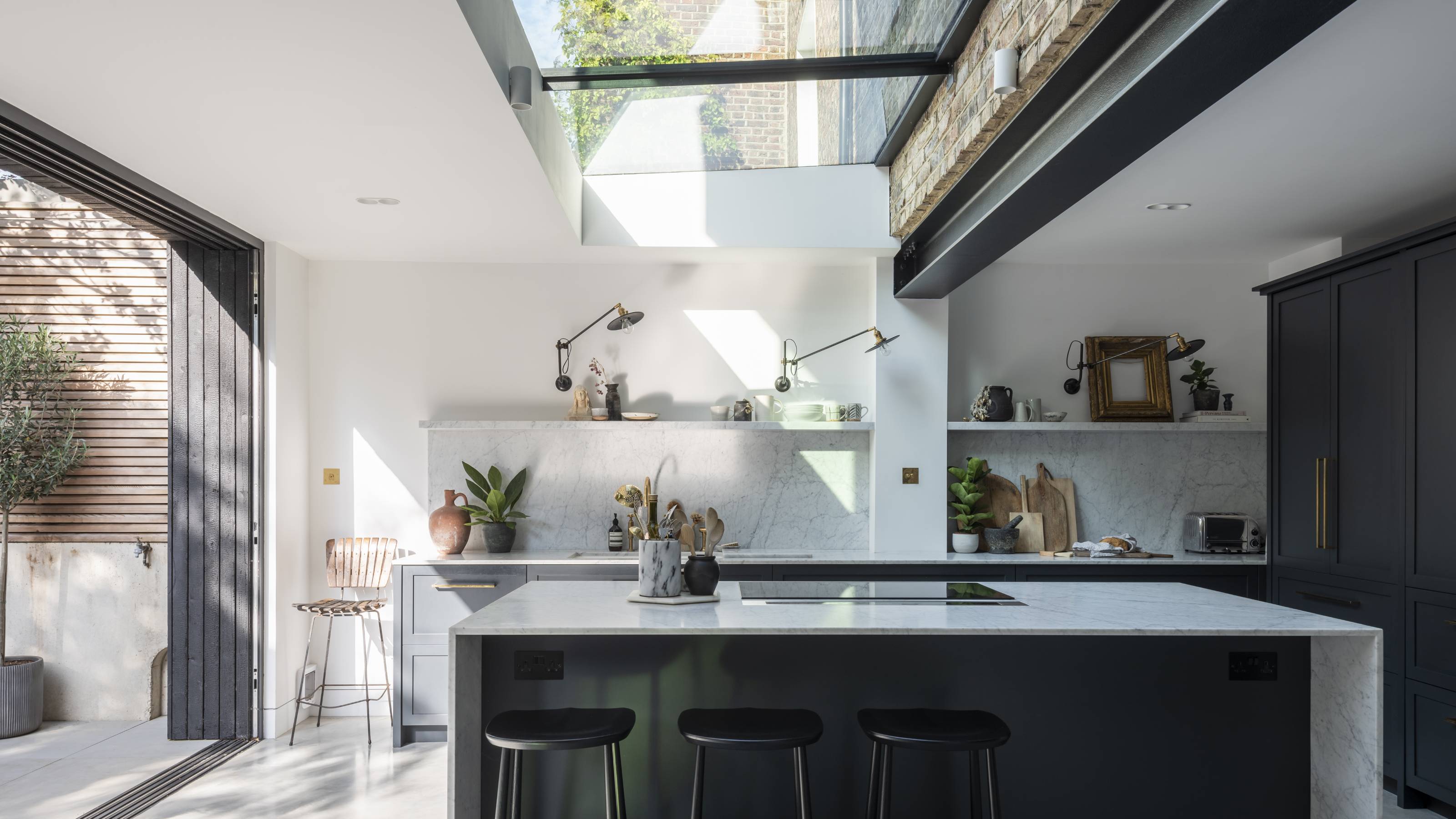 How Much Does an Extension Cost in 2025? Renovation and Design Experts Break Down Your Budget
How Much Does an Extension Cost in 2025? Renovation and Design Experts Break Down Your BudgetExplore how much different types of extensions cost in 2025 to budget for your project accurately
By Amy Reeves Published
-
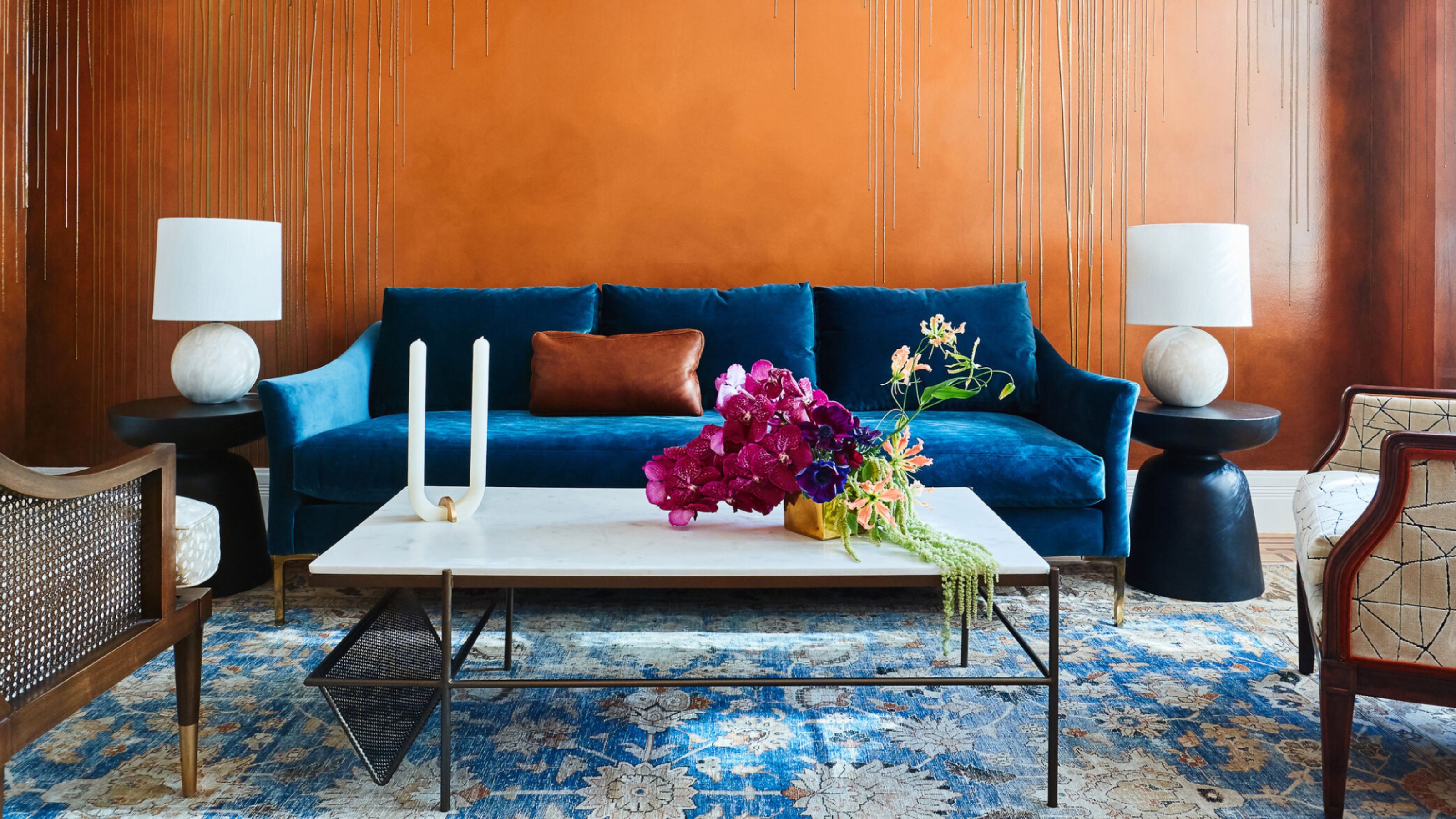 8 Blue And Orange Living Room Ideas Where "Enveloping And Transformative" Is the Mood
8 Blue And Orange Living Room Ideas Where "Enveloping And Transformative" Is the MoodA blue and orange scheme for living rooms may sound jarring, but these spaces prove they're striking, vibrant, and certainly unforgettable
By Camille Dubuis-Welch Published